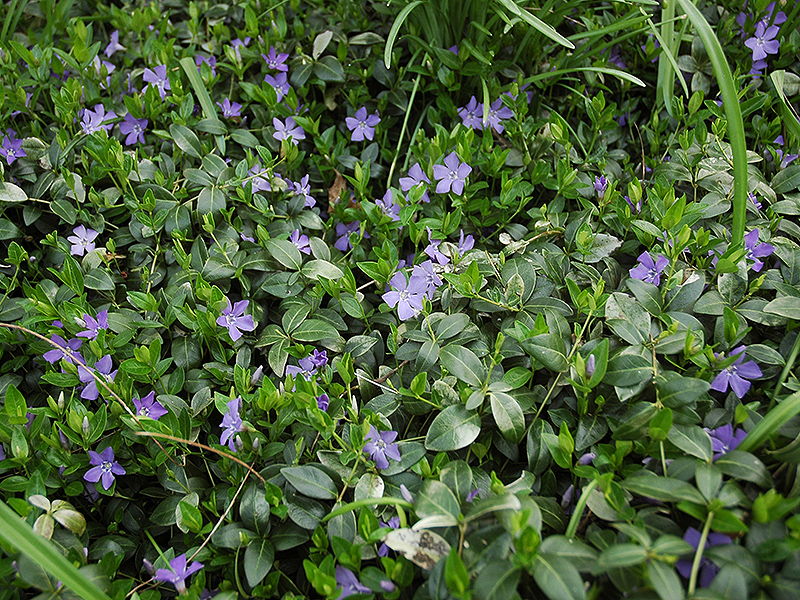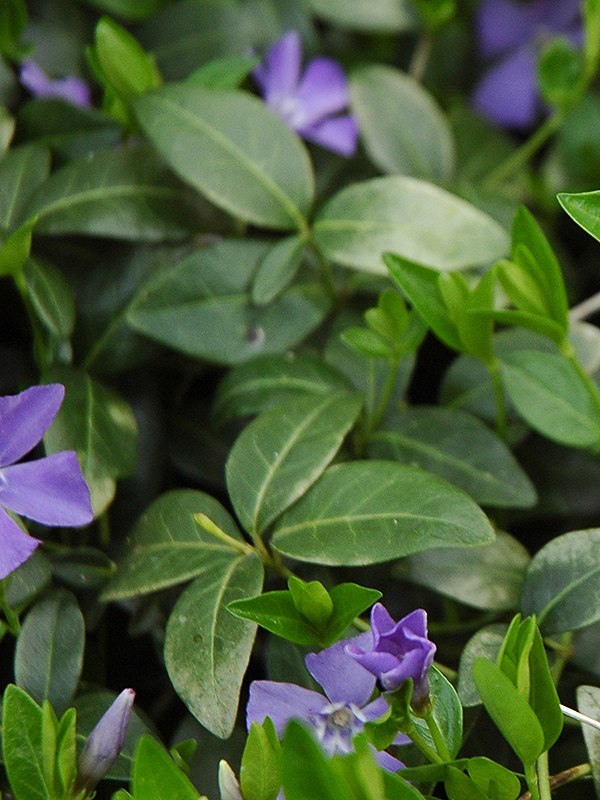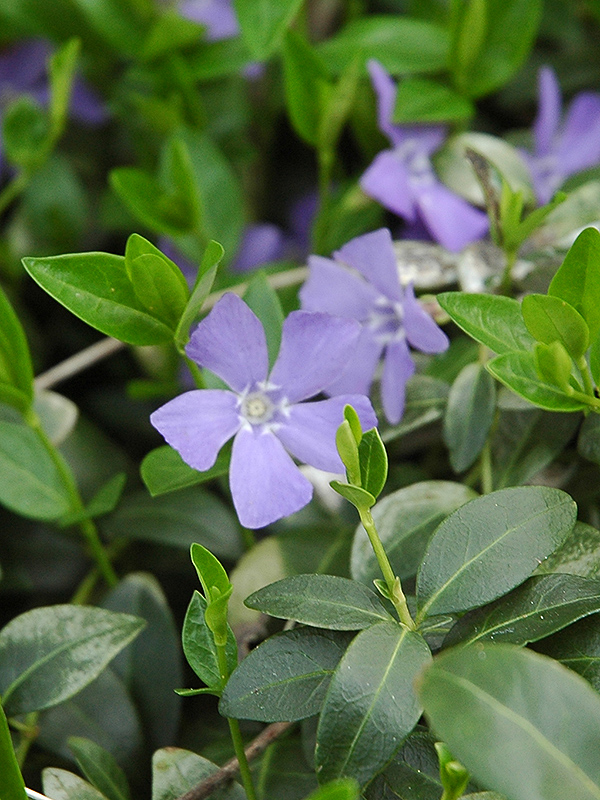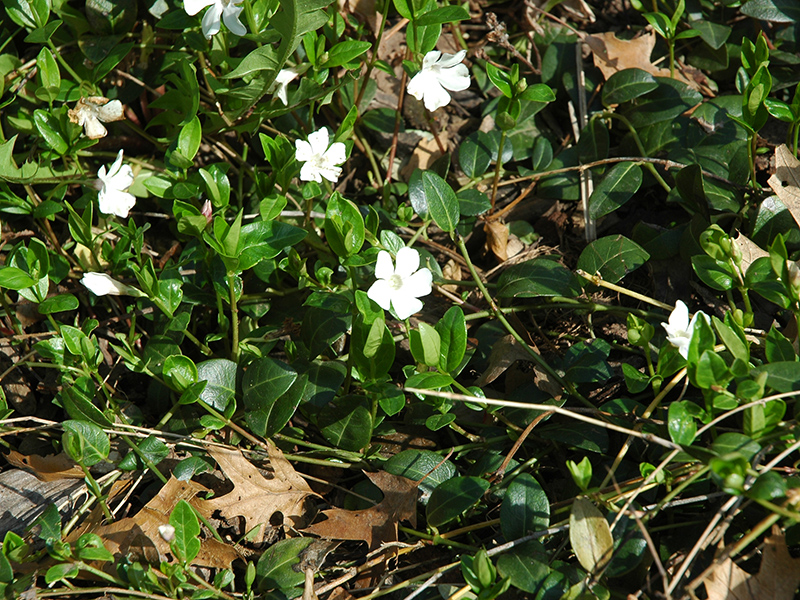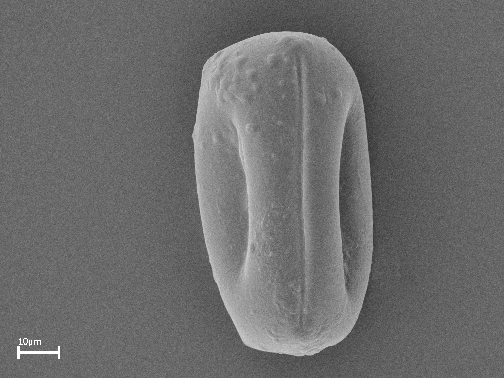| General Description | Mat-forming creeper found in shady locations, often used as ground cover. Stays a evergreen under snow. Has a habit of growing further than its intended planting bed. |
| ID Characteristic | Blue/purple flowers in spring, shiny, elliptical evergreen leaves on trailing stems, rooting at the nodes. Often mistaken for Purple Wintercreeper which do not root nodally. |
| Shape | Mat-forming groundcover. |
| Landscape | Used for ground cover in moist, shady areas at foundations, planting beds, often seen under woody plants. Attractive spring blossoms. |
| Propagation | Propagate by rooting semi-ripe stem cuttings in summer or crown division. |
| Cultivation | Grows best in partial sun to full shade in moist, well-drained soils, and is adaptable to pH and drought. The foliage will become chlorotic in full sun and the plant may fail. |
| Pests | Phomopsis livella (dieback) can become a serious problem. |
| Notable Specimens | The A.M. Cuddy Gardens, Strathroy, Ontario, Canada. |
| Habitat | Wide spreading, evergreen ground cover found in shady areas with moist, well-drained soils. |
| Bark/Stem Description | Non-woody stems which are slender (2 mm in diameter), light to dark green, smooth, and somewhat glabrous. |
| Flower/Leaf Bud Description | Buds appear in April after developing under the mat of foliage. Purplish, lanceolate buds, 1 cm long, on erect shoots. |
| Leaf Description | Elliptical, small (1-5 cm long) light to dark green leaves, in both a spiral and opposite leaf arrangement. |
| Flower Description | Solitary, perfect, purple flowers originate vertically from leaf axis and bloom from early spring to mid summer. Pinwheel formation, 12 cm in diameter with a five-lobed corolla. |
| Fruit Description | Often unnoticed, small follicle of brown fruit with no ornamental value. |
| Colour Description | Dark green on upper side of leaves, light green beneath. Vivid purple flowers. |
| Texture Description | Dense branching, soft leaves and a fine texture, comfortable to walk on. |
